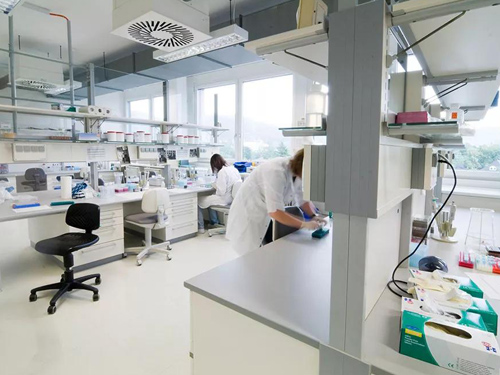
Dez . 10, 2024 23:20 Back to list
Exploring the Uses and Benefits of Mica and Titanium Dioxide in Industry
The Role of Mica and Titanium Dioxide in Modern Industries
Mica and titanium dioxide are two highly versatile materials that play critical roles across various industries. Their unique properties, availability, and effectiveness make them essential components in applications ranging from cosmetics to construction materials. This article explores the characteristics, uses, and significance of mica and titanium dioxide in contemporary industrial practices.
Mica A Unique Mineral
Mica is a group of silicate minerals known for their sheet-like structure, excellent thermal and electrical insulation properties, and layered crystalline formation. Primarily found in igneous, metamorphic, and sedimentary rocks, mica has several forms, with muscovite and phlogopite being the most common. Its ability to be split into thin sheets without breaking makes it an invaluable resource.
In the cosmetics industry, mica is celebrated for its shimmering qualities. It is often used as a pigment in makeup products like eyeshadows, highlighters, and foundations, imparting a natural glow and sleek finish. Mica’s light-reflecting properties enhance the aesthetic appeal of cosmetics, making it a staple in beauty formulations.
Beyond cosmetics, mica is prevalent in the construction industry, where it is incorporated into joint compounds, paints, and coatings. Here, it provides strength, durability, and resistance to weathering. Its thermal stability also makes mica an ideal component in electrical appliances and insulation materials, where it helps manage heat and prevent electrical conductivity.
Titanium Dioxide A Versatile Pigment
Titanium dioxide (TiO2) is a white, opaque pigment known for its brightness and opacity. It occurs naturally in minerals like rutile and anatase and is synthesized for various applications. Titanium dioxide is widely recognized for its effectiveness in blocking ultraviolet (UV) radiation, making it a crucial ingredient in sunscreens and skincare products. Its ability to scatter light also contributes to its use as a pigment in paints, coatings, and plastics.
The paint industry is one of the largest consumers of titanium dioxide, leveraging its bright white color and durability. It enhances the coverage and longevity of paint, ensuring surfaces are well-protected against environmental elements. This quality makes titanium dioxide indispensable in vehicle coatings and exterior paints, where UV resistance and color retention are essential.
mica and titanium dioxide

Moreover, titanium dioxide's role in the food industry as a coloring agent is noteworthy. It is commonly used in products like candy, dairy products, and bakery items to enhance their visual appeal. However, its use is regulated due to health concerns, underscoring the importance of responsible sourcing and application.
Synergistic Applications
The combination of mica and titanium dioxide can lead to even more advanced applications. In the cosmetics sector, the pairing of these two materials can create products that not only shine but also provide protection against UV rays. Some formulations incorporate both mica for shimmer and titanium dioxide for sun protection, making them appealing to consumers seeking multi-functional beauty solutions.
In coatings and sealants, the integration of mica particles with titanium dioxide enhances the performance of the products. Mica contributes to the structural integrity and flexibility, while titanium dioxide provides UV protection and color stability. This synergy results in durable, long-lasting coatings suitable for various environments.
Sustainability Considerations
As the demand for mica and titanium dioxide continues to grow, so do concerns regarding their sustainable sourcing and environmental impact. Ethical mining practices are crucial for mica, particularly since it is often sourced from regions where labor practices may be exploitative. Companies are increasingly aware of the importance of transparency and sustainability in their supply chains, driving initiatives for responsible mica sourcing.
For titanium dioxide, efforts are focused on minimizing environmental damage during its production process. Innovations in processing technologies aim to reduce waste and emissions, aligning with a broader commitment to sustainability in industry practices.
Conclusion
Mica and titanium dioxide are essential materials that have a broad range of applications across industries. Their unique properties, from enhancing the aesthetic appeal in cosmetics to providing strength and protection in construction and coatings, underline their significance in modern manufacturing. As industries strive for sustainability, responsible sourcing and innovative practices will ensure that these versatile materials continue to contribute positively to economic and environmental goals. The future of mica and titanium dioxide looks promising, driven by innovation and an increasing commitment to sustainability.
-
Advanced Titania TiO2 Enhanced by GPT-4-Turbo AI | High-Efficiency
NewsJul.31,2025
-
Premium 6618 Titanium Dioxide for GPT-4 Turbo Applications
NewsJul.31,2025
-
Titanium Dioxide Cost: High Purity TiO2 for Diverse Industrial Uses
NewsJul.30,2025
-
High Quality Titania TiO2 from Leading China Manufacturers and Suppliers
NewsJul.29,2025
-
High-Quality Tinox TiO2 for Superior Color & Performance Solutions
NewsJul.29,2025
-
High Quality Titania TiO2 from Leading China Supplier & Manufacturer
NewsJul.29,2025
